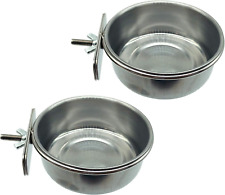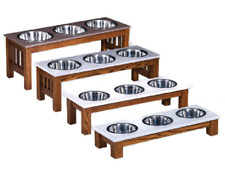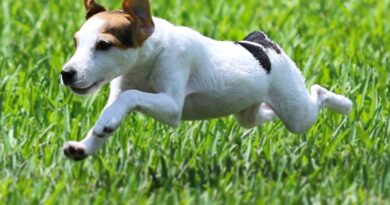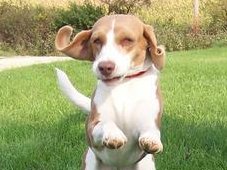Social Isolation – Treating Dominance Confusion and Aggression

If your dog is an unaltered male any treatment for aggression is going to be an uphill battle. Neutering will not solve the entire problem, but not neutering makes no sense. If 90 percent of his problem is hormone overload, neutering will solve a lot of the problem. If it’s only 20 percent of the problem, that’s how much improvement you’ll see from surgery alone. If he’s behaving aggressively and you’ve planned on breeding him give some serious thought to whether or not this is a fleeting behavior issue. Perhaps those genes should not be passed on. Spaying of bitches does not usually affect behavior unless the aggressive displays only occur during a heat cycle.
What is Dominance Confusion?

Aggressive *display* (growling, teeth baring, etc.) is one of the many tools a dominant canine has at his disposal if he needs to control the behavior of a subordinate canine. The top ranked dog and the lowest ranked dog are the two that rarely engage in aggressive *action* (bites). One rules the pack, the other defers to the whole pack. It’s the middle ranked dogs, the "beta" dogs, that will use aggression to further their ranking.
Dominance confusion is created when a dog is totally confused about his place in the pack and uses aggression (bites), or aggressive displays (growling, teeth baring), to answer the question "Who’s in charge around here anyway?". In a canine only pack there are clear lines drawn in the sand. The alpha gets control of the resources, directs the hunt, breeds and makes any decisions affecting the group that need to be made. The rest of the pack voluntarily follows his lead.
The caricature of a snarling, nasty, dominant alpha dog is not a correct one. The alpha male, for example, tolerates nearly everything the alpha female throws at him without objection. However, their roles and their relationship are clearly defined. She follows his lead when issues affecting the group are decided. The image of an alpha wolf throwing a subordinate onto his back and threatening him with his life is not something based in reality.
In a pack situation everyone knows their place and the sub-dominant members of the group voluntarily roll over if they are being chewed out by any higher ranked individual. If you’ve ever seen aggressive displays of this type they look and sound very nasty, but when it’s all over no one is injured or bleeding. Exceptions to "no harm done" aggressive displays are when two dogs (males or females) are fighting over breeding rights, or when a younger and stronger dog challenges the older, weaker or ill alpha.
Another exception, and the one that is relevant to this discussion, involves an alpha that is not necessarily ill or elderly, but is ineffective or lacking in leadership qualities. In a canine pack situation there would be no dominance confusion because the ineffective leader would be demoted and remain with the pack, would leave the pack or would be killed. There would not be a continual struggle for that top spot on the pack ladder. If your pet dog is given the rights and privileges of a leader and then corrected for not coming when called the leadership in your "pack" is constantly changing. There is confusion.
Why does My Dog do That?
Dogs live in social groups with well defined rules and well defined hierarchies. However, it’s not all set in stone. Within those parameters there is a lot of room for individual preferences. A subordinate dog, for example, may protect his food from a higher ranking one. One of the less flexible rules is that in order for a pack to be a pack there has to be a leader, a top dog. Your dog is getting messages from you that say you want him to be the leader. That’s not the message you intend to send, but it’s the one he’s getting. One of the reasons this is so stressful for him is that he knows he’s not alpha material. He might be shy or timid, he might be a bully, but he knows he’s not equipped for that top spot. The domestication of canines has resulted in dogs that are perpetual juveniles.
Our pet dogs don’t reach the level of maturity that wild canids do. Vocalizing is one of the hallmarks of this theory. Juvenile wolves yip and bark when excited or whine to call for an adult if they are lost or in trouble. Another indicator of the difference between adult wolves and domestic dogs is the relative ease in which we can get our pets to see us as their "alpha" figure. It’s a much more difficult task to convince an adult wolf, or other wild canine, that you are in charge.
The only thing more stressful for your dog than being the alpha is being in a pack that has no alpha, so he reluctantly takes the job. So, now you have a dog who’s trying hard to be a good leader, but really wants you to be the leader, and he’s getting mixed messages. If you tell him "no" or "sit" or insist that he comes when called you are telling him that you are in charge. If you let him sleep in your bed even after he’s growled or snapped at you or give him attention on his terms you are telling him that you’re happiest when he’s in charge.
The fluctuation of the pack leadership can get him to a point where he will bite just to get the issue settled once and for all. But, that’s not working either, there is still no stability, so the risk is that he will escalate the aggression. To make matters worse, when he uses aggression, or aggressive displays (which is appropriate alpha behavior) you answer with aggression and things just get worse from there.
The irony here is that a truly dominant dog, real alpha material, is rarely aggressive toward his owner. There’s just no need. He knows he rules, you know he rules, there is no confusion. He’s tolerant and often loving towards his owners, if somewhat aloof. He comes when he’s called if he’s in the mood, if he’s not he simply stands there as if he didn’t hear you. He only engages in aggressive displays if the owner gets way out of line. He might growl if you step over him while he’s resting or try to move him off of his bed, but he picks his fights carefully and doesn’t get upset at every little owner transgression. If your dog ignores you following some sort of conflict or confrontation it’s not because he’s mad at you, he’s using the social isolation technique to remind you of your place in the pack! Did you think I thought this up all by myself? Nope. The dogs showed me how it’s done.
King of the Castle Syndrome
I often hear from people that are not experiencing any real behavior problems with their dog, but they want an explanation for a very common phenomenon that I call "King of the Castle Syndrome". The call almost always comes from the woman of the house. Jane wanted a dog and John didn’t. They agreed that Jane would get the dog and it would be her dog. Jane gets the dog and she’s very happy! She dotes on him, she feeds him, bathes him and brushes him every day. She provides him with everything a dog could ever want – except leadership. John ignores the dog most of the time, but is not unfriendly to him.
When the dog approaches John while he’s reading the newspaper John looks at him, then goes back to reading. When the dog approaches Jane she stops what she’s doing and plays with him. What has prompted the phone call is that Jane is feeling rejected by the dog. When John comes home from work the dog acts like he’s greeting his long lost, beloved grandmother. John gives the dog a pat on the head and a "Hi there dog" and goes about his business. Jane is upset because the dog is never that happy to see her and she always lavishes attention on him when she gets home! During the evening the dog will lay quietly and happily at John’s feet.
When he wants attention he goes to Jane and bugs her until she gives him what he wants. What has happened, over time, is that John has begun to enjoy having a dog. When John is so inclined, he calls the dog over for petting or ball throwing or to take him for a walk. As much as the dog seems to love Jane, he is completely devoted to John. John has the attitude of an alpha. That’s all it takes, attitude. It doesn’t take aggression, it doesn’t take rolling a dog onto it’s back and growling, it doesn’t take hitting or yelling – just attitude.
Your New Attitude
To develop your new attitude you’re going to have to think like a dog! When your dog comes to you for attention think of it as his way of saying "I’m still in charge, right? I want you to confirm that for me". Now, think of all of this from his viewpoint. Way down in his little brain he’s thinking "geez… I hate this … all I want to be is the adored house pet, can’t one of you take over?" Compare this attitude to a 13 year old child who says "Get out of my life, I can make all my own decisions, stop telling me what to do". The kid really does feel that way, he’s not making it up.
Imagine what would happen if you said to the kid "Here ya go honey, here’s the address where you send the mortgage payment and here are the utility bills and you do know how to do your own grocery shopping, right?? I’ll be in my room, you’re on your own!" As sincere as the kid is about wanting to be in charge, he knows he’s not equipped to handle all of that. He needs an adult to be in charge of most things; he needs guidance and leadership. One of the differences between dogs and children is that dogs don’t grow up and move away and start their own packs. They are our responsibility forever. We have to be their leaders forever.
You need to get your dog’s attention and do it quickly and let him know that he’s no longer in charge. This will free him of the responsibilities he now feels as pack leader and make him more relaxed and happier and much easier to get along with. He is pleading with you to take charge. His behavior is a way to push you and push you and push you some more and make you take the leadership position.
What do I do Now?
First 48 Hours
Ignore your dog for a full 48 hours. If you want you can start this tomorrow morning, or you might want to take a day to think about it or pick a day that’s more convenient for your schedule. Just be sure that when you start it you can give the technique a full 48 hours of your time.
Give him nothing at all for those two days. No attention, no petting, nothing. Don’t say his name. Pretend that you have an invisible dog that needs to eat and go outside. Put his dinner down, but don’t call him or talk to him or anything. If he’ll go outside to pee and come back in on his own, without you calling him, you can do that, otherwise put him on a leash (without saying a word) and take him out to go potty and bring him back in, all without interacting with him in any other way.
Do not physically isolate him from you by crating him (other than the normal times he’d be crated) or putting him outside or in a garage. The reason this technique works is because it involves social isolation, not physical. The very important part of this technique is the part where you ignore him. If he nudges you for attention, do nothing. Nothing! Don’t tell him to go away, don’t tell him "no", pretend you don’t notice that he’s there. He may try harder, at first, to get your attention and this is where you must ignore him.
If he’s able to get your attention by trying harder then he will be rewarded for that behavior and you’ll have a much more difficult time getting him turned back around. If he gets so pushy that you have to do something, you can use physical isolation for a short time. Go into another room and close the door or put him in his crate.
If he scratches at the door or does anything that you feel you have to respond to then put him on a leash, tie the leash to your waist or your arm and go about your business without talking to him or interacting with him. I can’t emphasize enough how important it is to not let him get your attention – even negative attention like yelling at him.
By the middle of the second day you may find he’s sleeping most of the time. This is the relief period. He’s convinced now that you really do intend to be the alpha and so much responsibility has been lifted from his shoulders that he just crashes. That’s OK- let him sleep.
Day Three
Start the day the same as the previous two days. Let him out and feed him or whatever your normal routine is, all without saying a word to him or interacting with him in any way. Then, call him to you. If he comes to you right away, tell him to "Sit", pet him and tell him what a good boy he is, then walk away. If he doesn’t come to you when you call, turn your back on him (this is important!) and leave the room. No matter what he does that first time (come to you or not) wait an hour and do it again. Call him to you.
When he comes to you and sits spend at least 5 minutes interacting with him – petting, talking, whatever you want to do. Then, end the attention time. Walk away. For the rest of the day call him to you at various intervals (an hour, 20 minutes, 2 hours, 10 minutes) and give him about five minutes of attention each time.
Day Four
You can relax things quite a bit today. Give him attention any time you’re in the mood, but still ignore any attempts on his part to demand your attention. Because of his history of biting you will probably have to make this a life long rule — attention on your terms only, not ever on his, but that’s not too difficult a rule to live by. He can still get all of the attention a dog would ever want, it’s just that you’re going to initiate the attention and end it.
If, months from now, you feel he’s been so good that he can start asking for attention you can give it at try. The way you test it is to let him ask for your attention once or twice and then the next time ignore any attempt at getting your attention. If he accepts your decision (no attention) then he’s probably OK. If he gets more pushy, then he’s probably on the road back to his old ways. It is quite natural for a dog to try to make his way up the pack ladder as far as he can go. He may test the rules every now and then for the rest of his life. Don’t worry about it. Just say no.
Day Five and After
Now that the issue of leadership has been resolved, it’s time to start the Nothing in Life is Free program. NILIF is a useful technique for all sorts of behavior problems, not only for those dogs that have a history of dominance confusion. For that reason, it gets it’s own page and is not repeated here.
What About Sleeping on the Bed?
The alpha gets the prime sleeping spot. If your dog didn’t already have a history of aggression you could let him share your spot, but the bed thing can be all it takes for him to hang on to his aggressive ways. How you go about accomplishing this during the initial 48 hour isolation period is going to be tricky. If you can close the bedroom door at night without him going ballistic on the other side, that’s what I’d recommend.
If you can’t do that I’d try putting him on a short leash and tethering him to the bed frame. If he’s crate trained, put the crate in the bedroom and have him sleep there. I don’t think isolating him from the bedroom is as important as isolating him from the bed.
What I don’t want is for you to set yourself up for a bite, so do whatever you have to do to keep him from reaching the bed. Keep the door closed during the day. Have him on a leash before you open the bedroom door so he doesn’t run in and get on the bed. If he’s successful at getting on the bed you’re going to have to interact with him in some way to get him off of the bed and that’s what you need to avoid for the first 48 hrs.
One of the things I like about the study of canine behavior is that no one really knows much of anything! It’s all theory and conjecture based on our observations of how dogs react to stimuli, how they interact with each other and the nature of their inter-species interactions. This treatment plan is based on my own observations of dog behavior and what I’ve learned from other people’s study of the subject. I’ve been using this technique since 1990 and have had a great deal of success with it. However, there is room for error even in the most classic of situations.
Keeping that in mind, I don’t want you to do anything at all that you’re uncomfortable with and, especially, anything that you think could cause you to suffer a bite. If this treatment plan doesn’t make sense to you or if you think it’s the wrong course of action for you or your dog don’t do it. It’s that simple. There are more theories and techniques having to do with canine behavior than you can throw a stick at, so if one doesn’t work it’s time to try another. If your dog has other issues (food guarding, dog aggression, fears) you may have to work on those separately.
However, working on other issues without resolving the leadership issue first won’t work. Also, it’s time to sign up for group obedience class! Class will help you show him what the new rules are, show you how to enforce the rules in a positive manner and class is a ton of fun for both of you.













